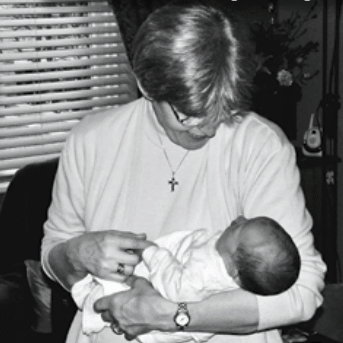
Foremilk, hindmilk…it’s all breastmilk!
When you have your baby, in fact even when you’re pregnant, you’ll find that everyone has advice for you… and it doesn’t always match what you are doing, or how you want to do things. This can lead to a lot of confusion and often leaves new parents second-guessing themselves on all sorts of things.
After the first few days, once your milk has changed from colostrum to more mature milk, you might hear people talking about foremilk and hindmilk, often along with comments about the importance of making sure your baby gets the hindmilk.
This can understandably lead to concerns about whether or not baby is getting enough hindmilk, and I’m quite often asked how long a feed needs to be to make sure the baby gets enough hindmilk, or how many ‘let-downs’ are necessary to ensure baby gets ‘enough’.
I remember worrying about this when I was feeding my baby too. Somewhere along the line I’d got this idea that I had to feed for a certain amount of time to make sure that they got ‘the hindmilk’.
In fact, there is not a magic number of minutes that a baby needs to feed for. In general, so long as they are being fed on demand, and are being allowed to feed on each breast for as long as they want to, everything is usually working just fine.
I usually compare breastmilk foremilk and hindmilk to water from a hot tap: when you first turn the tap on, the water is cold. If you let it run, it gradually gets warmer, and a bit warmer, and eventually hot! If you leave the tap for a short while and then come back to it, it doesn’t start at cold again, but is usually still a bit warm, and gets to fully hot more quickly.
This is how I explain the transition from foremilk to hindmilk. It varies, but the message is that if you let the baby feed for as long as they want to (let the tap run), your baby will get the lovely high-calorie, rich, fattier milk known as hindmilk.
If your baby comes off the breast but doesn’t seem settled, you can offer the same breast again – they may continue to feed from that breast, getting to the high-calorie milk. However, sometimes baby won’t seem happy to continue feeding from the same side. If you offer the other side, they will get the lighter, thirst-quenching milk at the beginning of the feed again, the foremilk. That might be all they need, or they might go through the whole process again until they get to the hindmilk.
You can also think of a breastfeed as a delicious three-course meal: starter, main course and a lovely high-calorie dessert. Sometimes, after that lovely rich dessert, a quick refreshing drink is in order – sometimes (perhaps during a growth spurt), your baby may want all three courses again!
Try not to worry about whether baby has had enough hindmilk each feed. Follow their cues. Sometimes a little snack or drink is required; sometimes it’s the whole three courses. So long as your baby is gaining weight well, is meeting most developmental milestones, is happy and content, then it’s likely all is going well.
Find out more
If you have any questions or concerns about your baby’s feeding, contact your local La Leche League Leader for support and information. You can find your local Leader at: lalecheleague.org.nz/get-help/
For more information or to contact the author directly email denise@deniseives.com





